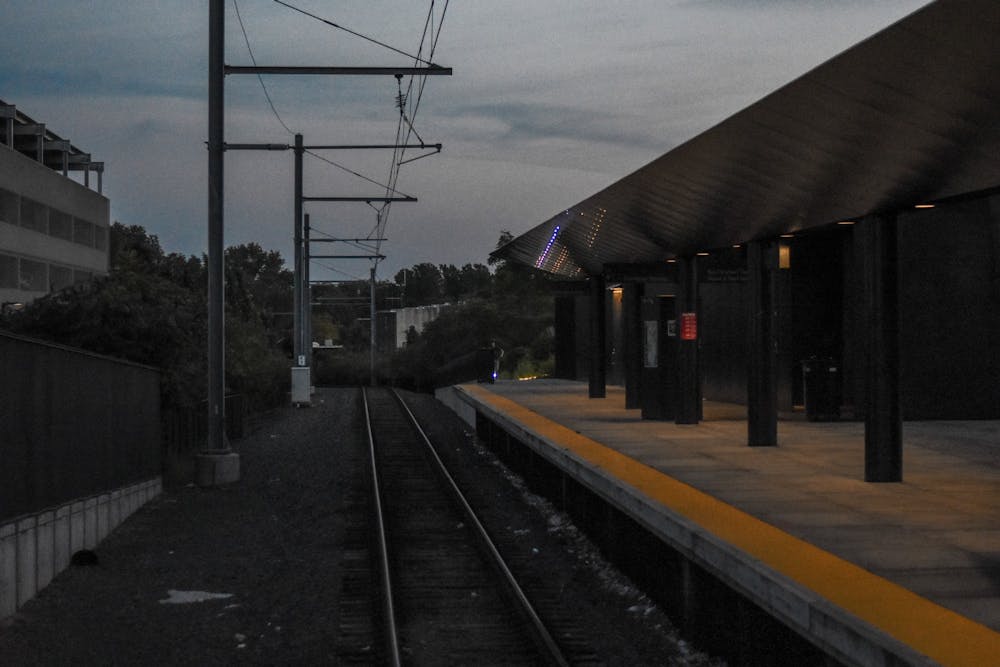The following is a guest contribution and reflects the author’s views alone. For information on how to submit an article to the Opinion Section, click here.
In recent years, the Princeton Line between Princeton Junction and Princeton Station, known more commonly as the Dinky, has been the subject of calls for revitalization. NJTransit is considering two alternatives. One, known as Alternative 4, would be to simply leave the Dinky as it is today. Recently, Jessica Wilson wrote a guest contribution for the ‘Prince’ that argued for the other alternative, known as Alternative 1: reconstructing the Dinky as a mixed light rail, bus rapid transit, pedestrian, and cyclist corridor.
Wilson makes a good case for Alternative 1, arguing it would increase service frequency on the Dinky corridor, expand access to University, including for residents of the town, and provide easier access to recreation on the D&R canal’s towpath. These are moderate but genuinely useful improvements for the community.
Unfortunately, this analysis leaves out one inconvenient detail: Alternative 1’s shocking estimated construction cost of 190 million dollars. This is because the project is fundamentally over-engineered compared to the needs of the community. The planning process for this boondoggle of a rebuild will at best waste hundreds of millions of dollars; at worst, it threatens to doom the Dinky altogether.
NJTransit’s touted improvements for Alternative 1 could be achieved with far less spending. Take the proposed bike lanes and a pedestrian corridor on the route, expected to cost 45 million dollars. As Wilson notes, this offers safe passage to the canal and over Route 1, but what she and seemingly NJTransit fail to recognize is that the infrastructure to achieve these goals already exists in the form of Alexander Street. A simple modification of the street to add bike lanes or wider sidewalks supported by traffic calming measures would enhance the existing corridor to the canal for far less money.
Meanwhile, Alternative 4, maintaining the status quo, is estimated to cost only 37 million dollars in total. It is foolish for NJTransit to request an inflated budget from the state to only marginally improve pedestrian and cyclist access to the canal. In fact, such demands could put any future Dinky improvements at risk by making it seem as though the Dinky is too expensive to maintain.
The bus rapid transit and light rail components of the project feature even more needless and reckless spending. It’s true that there are benefits to the bus rapid transit component: Princeton Station is inconveniently far from Nassau Street, and frequent bus service between them would boost Dinky ridership. The project’s possible addition of bus service to the Princeton North shopping center would be a further boon to residents and students without cars.
The problem is the plan for this service to then continue over the current Dinky corridor all the way to Princeton Junction. This requires ripping out the current tracks and bridges and rebuilding them with new roadways, embedded light rail, and stations. That part of the plan alone would cost a staggering 100 million dollars, and end the Dinky as we know it today.

We should be aiming for a lean and efficient improvement project. We have tracks, power lines, and stations working quickly and reliably today. All that is needed to maintain service is purchasing new vehicles. We shouldn’t fix the Dinky when its infrastructure isn’t broken. Instead, we should fix residents’ current sticking point: Princeton Station’s inconvenient location. By running frequent bus service between Princeton North and Princeton Station, with free transfers to the Dinky, we could connect more riders to the Dinky and get faster and smoother service. Furthermore, these changes wouldn’t require the arduous process of getting support for and executing a 190-million-dollar project.
Unfortunately, NJTransit is currently only putting forth Alternatives 1 and 4 as viable options to improve the Dinky — which might feel like an all-or-nothing approach. The agency would like us to believe that any improvement for Princeton residents would involve the demolition of a line that has served them well since 1865 in favor of a new glorified road. Still, as Wilson’s article shows, it might seem compelling to fight for Alternative 1’s improvements, even if they come with an outrageously high price tag.
Pursuing Alternative 1, however, comes with risks we should not accept. For one, NJTransit has already floated replacing the Dinky with buses under Alternative 3. Though it is not actively considering this alternative, if the costs of constructing or operating Alternative 1 balloon, NJTransit could easily choose not to buy light rail vehicles for the corridor or to stop running those vehicles. Alternatively, if the agency concludes bus rapid transit and light rail are too expensive and the status quo is too inflexible, it may opt to scrap the Dinky altogether and elect to just run buses on Alexander Street. In either case, the result would be slower service useful to even fewer people.
Poor stewardship of this line by University and NJTransit administrators has cost the Dinky dearly before. At the urging of the University, NJTransit shortened the line by 460 feet in 2014, increasing walking times for Princeton residents and helping drive the declining ridership that threatens the Dinky today. Alternative 1 is a poor attempt at fixing this past mistake that primarily succeeds in wasting more money.

We should recognize today’s Dinky as Princeton’s core transit backbone. By fighting for Alternative 4 today, we secure its immediate future. As the community’s needs continue to grow, we can expand transit incrementally. Whether it means adding more buses serving Princeton Station or increasing frequency on the Dinky, the current structure can still support a higher ridership. The Dinky has served us faithfully for a century. Let’s keep it running for the next.
Darius Jankauskas is a junior from Brooklyn, N.Y. He can be reached at dariusj@princeton.edu.








